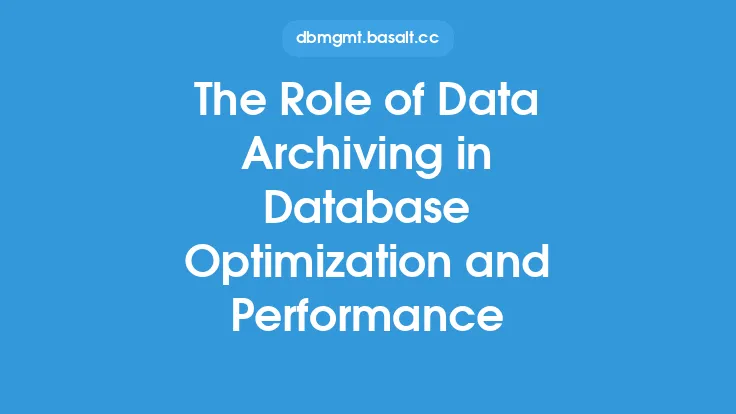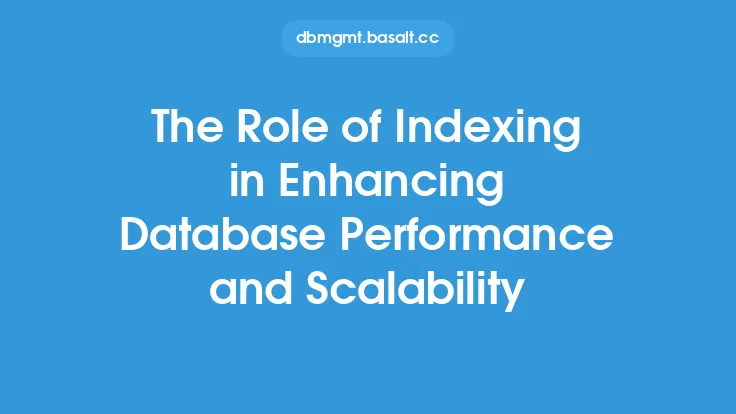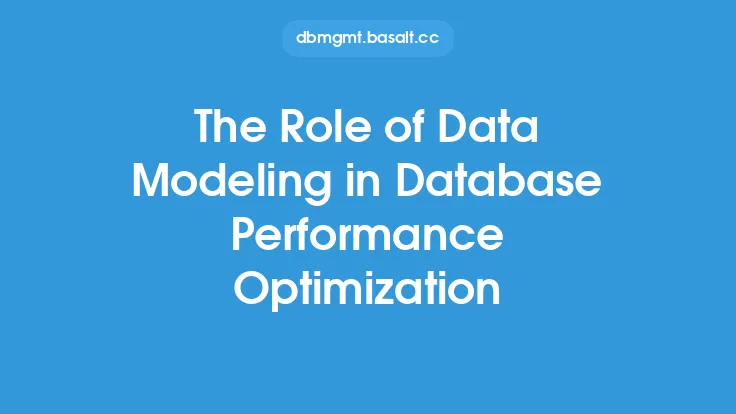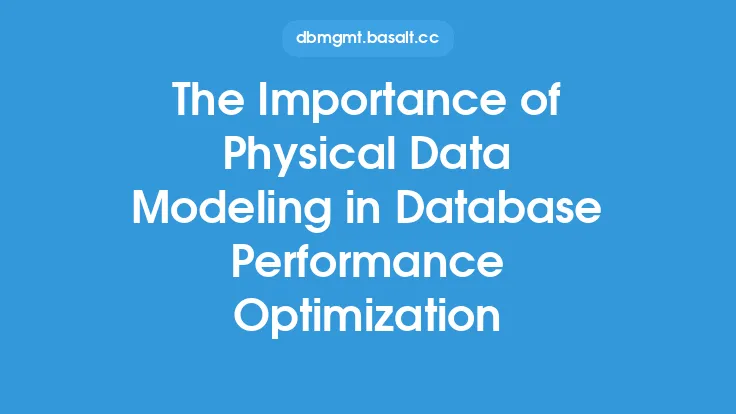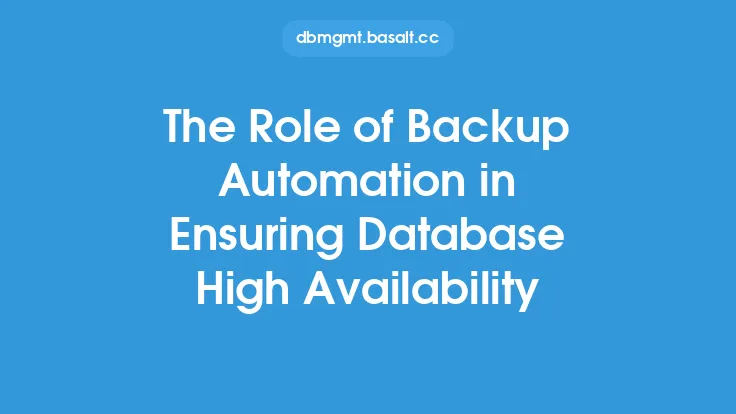When it comes to database performance and scalability, there are several factors that come into play. While software and database design are crucial components, the role of hardware cannot be overstated. The underlying hardware infrastructure can significantly impact the performance and scalability of a database, and understanding the various components and their interactions is essential for optimizing database performance.
Hardware Components and Their Impact on Database Performance
The primary hardware components that affect database performance include the central processing unit (CPU), memory (RAM), storage, and networking equipment. The CPU is responsible for executing database queries and performing computations, and its speed and number of cores can significantly impact performance. A faster CPU with multiple cores can handle more concurrent queries and perform complex computations more efficiently. However, the CPU is often not the bottleneck in database performance, and other components such as storage and memory can have a more significant impact.
Memory (RAM) plays a critical role in database performance, as it determines the amount of data that can be cached and processed in real-time. A larger amount of RAM allows for more data to be stored in memory, reducing the need for disk I/O and improving query performance. However, the amount of RAM required can vary greatly depending on the database size, query complexity, and workload.
Storage is another critical component that affects database performance. The type and speed of storage devices, such as hard disk drives (HDDs) or solid-state drives (SSDs), can significantly impact query performance. SSDs, in particular, offer significant performance improvements due to their faster read and write speeds. Additionally, the storage configuration, such as RAID (Redundant Array of Independent Disks) or SAN (Storage Area Network), can also impact performance and scalability.
Networking equipment, such as network interface cards (NICs) and switches, can also impact database performance, particularly in distributed database environments. The speed and reliability of the network can affect data transfer rates and query performance, and high-speed networking equipment such as InfiniBand or Fibre Channel can be necessary for high-performance databases.
Storage Technologies and Their Impact on Database Performance
Storage technologies have evolved significantly in recent years, and the choice of storage technology can have a substantial impact on database performance. Traditional HDDs are being replaced by SSDs, which offer faster read and write speeds and lower latency. SSDs can be further divided into several categories, including SATA, SAS, and PCIe, each with its own performance characteristics.
Flash storage, in particular, has become increasingly popular in database environments due to its high performance and low latency. Flash storage can be used as a cache layer or as a primary storage device, and it offers significant performance improvements for databases with high transactional workloads.
Other storage technologies, such as non-volatile memory express (NVMe) and storage-class memory (SCM), are also emerging as high-performance storage options. NVMe offers high-speed storage access over PCIe, while SCM offers low-latency storage access using technologies such as phase-change memory (PCM) or spin-transfer torque magnetic recording (STT-MRAM).
CPU and Memory Architectures for Database Performance
The CPU and memory architectures can also significantly impact database performance. Modern CPUs offer multiple cores and threads, which can be leveraged by databases to improve performance. However, the CPU architecture can also impact performance, with some CPUs offering better performance for certain workloads.
Memory architectures, such as NUMA (Non-Uniform Memory Access) and SMP (Symmetric Multiprocessing), can also impact database performance. NUMA architectures, in particular, can offer significant performance improvements for databases with high concurrency and parallelism.
Networking and Interconnects for Distributed Databases
In distributed database environments, networking and interconnects play a critical role in performance and scalability. High-speed networking equipment, such as InfiniBand or Fibre Channel, can offer low-latency and high-bandwidth data transfer, which is essential for distributed databases.
Interconnects, such as Ethernet or PCIe, can also impact performance, and the choice of interconnect can depend on the specific database workload and architecture. Additionally, network protocols, such as TCP/IP or RDMA (Remote Direct Memory Access), can also impact performance, and the choice of protocol can depend on the specific database requirements.
Best Practices for Hardware Selection and Configuration
When selecting and configuring hardware for database performance and scalability, several best practices can be followed. First, it is essential to understand the database workload and performance requirements, including the number of concurrent users, query complexity, and data size.
Second, the hardware components should be selected based on the database workload and performance requirements. For example, a database with high transactional workload may require faster storage and more CPU cores, while a database with high analytical workload may require more memory and faster networking equipment.
Third, the hardware components should be configured for optimal performance, including the configuration of storage, networking, and CPU resources. This may involve configuring RAID or SAN storage, optimizing network protocols, and allocating CPU resources for specific database tasks.
Finally, the hardware should be monitored and maintained regularly to ensure optimal performance and scalability. This may involve monitoring CPU usage, memory usage, and disk I/O, as well as performing regular maintenance tasks such as backups and software updates.
Future Directions and Emerging Trends
The role of hardware in database performance and scalability is constantly evolving, with emerging trends and technologies offering new opportunities for improvement. One emerging trend is the use of artificial intelligence (AI) and machine learning (ML) to optimize database performance and scalability.
Another emerging trend is the use of cloud-based infrastructure and services, which can offer scalable and on-demand hardware resources for databases. Additionally, the use of containerization and virtualization technologies can offer improved resource utilization and flexibility for database environments.
Finally, the use of new storage technologies, such as quantum storage and DNA storage, may offer significant performance improvements for databases in the future. These emerging trends and technologies will continue to shape the role of hardware in database performance and scalability, and understanding their impact will be essential for optimizing database performance and scalability.
